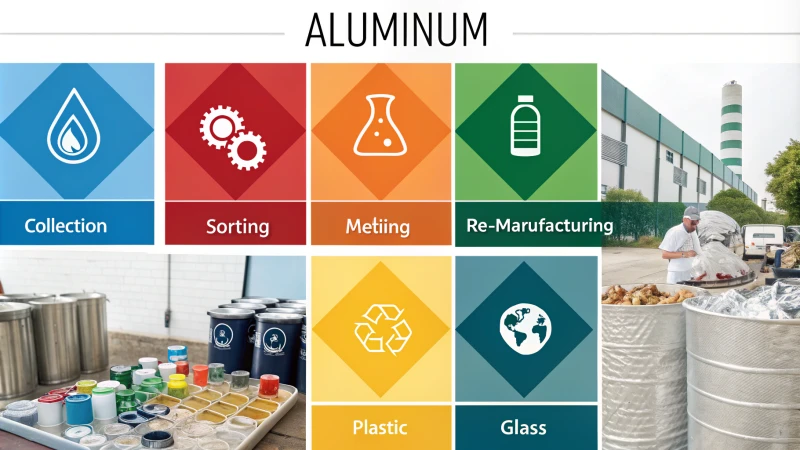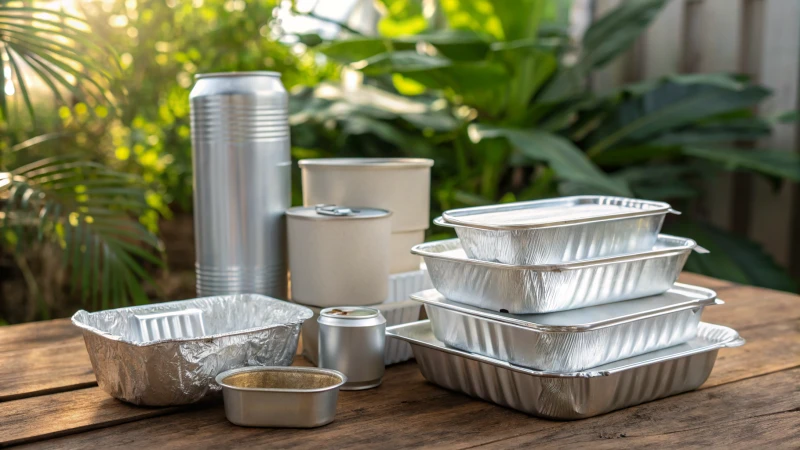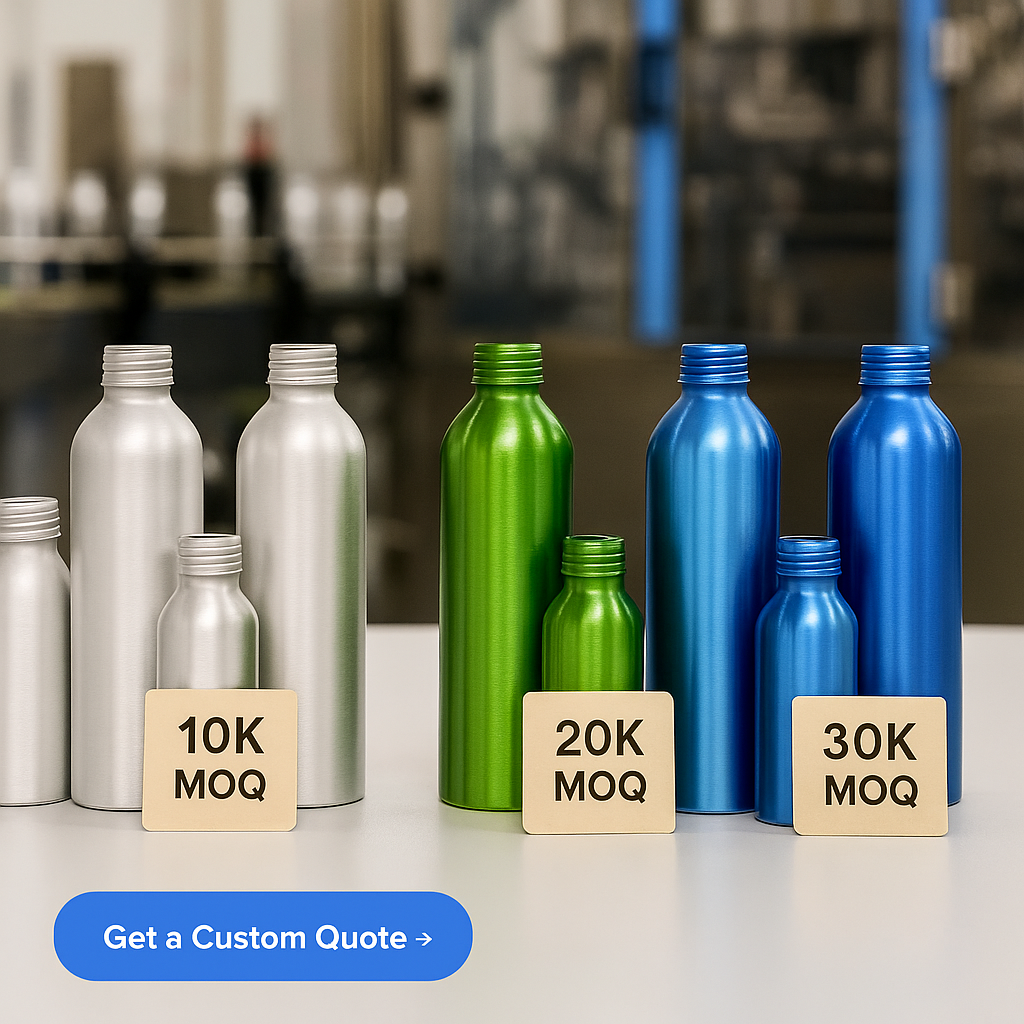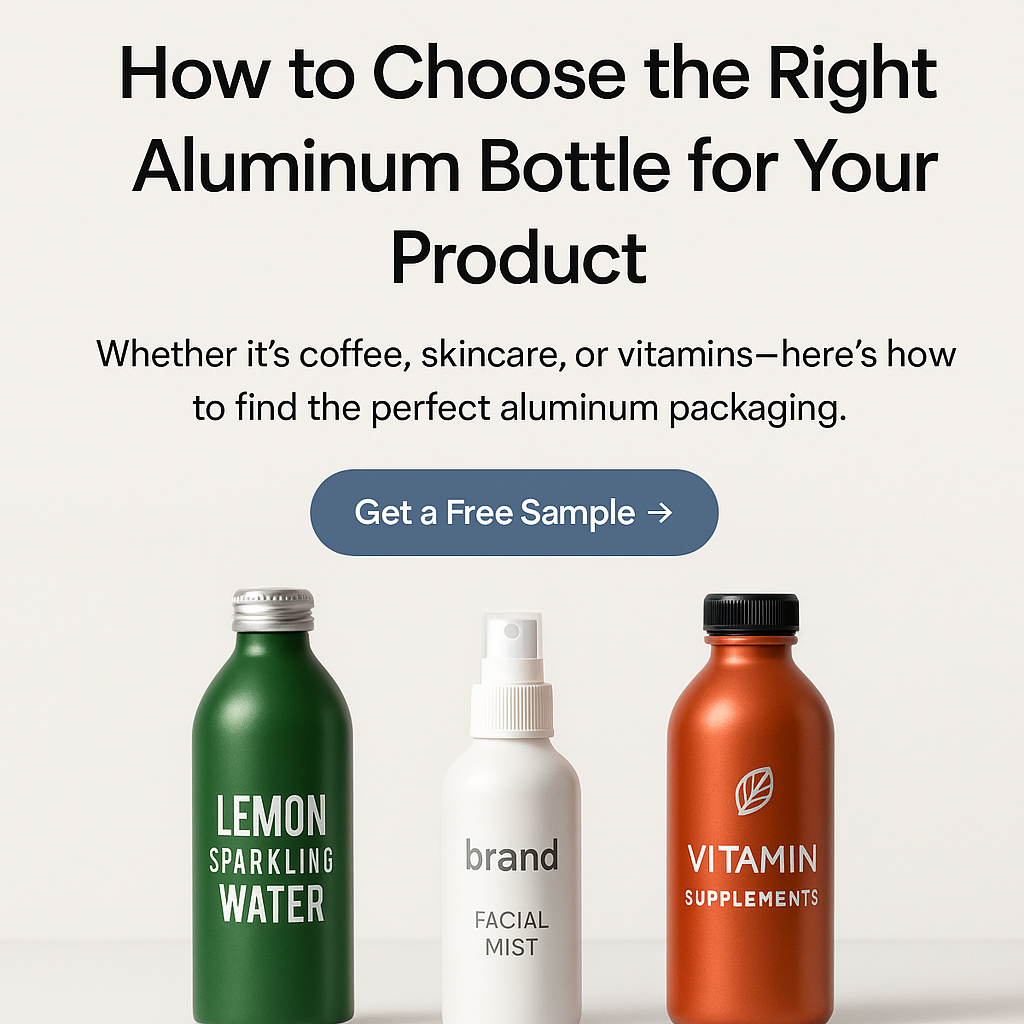
Each choice transforms the planet. Selecting the correct packaging holds significant potential. Packaging choices really matter.
Aluminum is the top choice for sustainable packaging. It is not just recyclable. It is infinitely recyclable without losing quality. Plastics stay in landfills for centuries. Aluminum returns to use again and again. This benefits both businesses and eco-conscious consumers. A true win-win situation.
Let me share why I really like aluminum. Years ago, I changed to aluminum packaging for my products. Its shiny look and strength first attracted me. Later, I found out about its amazing environmental benefits. It felt like a huge win. Aluminum does not just improve my brand's appearance. It also matches my love for sustainability. I noticed our waste dropping and our carbon footprint getting smaller. This reassured me of my decision. Let's explore how aluminum surpasses both plastic and glass. It also really improves your brand's green image.
Aluminum can be recycled indefinitely.True
Aluminum maintains its quality through endless recycling cycles.
Plastic decomposes faster than aluminum.False
Plastic takes hundreds of years to decompose, unlike aluminum.
Why is Aluminum More Recyclable Than Other Materials?
Aluminum often stands as the hero of recycling. It holds incredible benefits and surpasses other materials.
Aluminum is more recyclable because it never loses quality, even after many recycling cycles. Recycling aluminum uses just 5% of the energy needed to produce new aluminum. It proves to be very efficient.

The Energy Efficiency of Aluminum Recycling
I explored green packaging options for my products. Aluminum quickly attracted me. Recycling aluminum uses much less energy than creating new aluminum. This fact changed everything for me. Unlike plastics1, aluminum stays perfect after recycling.
-
Energy Usage Comparison
Material Energy Savings (%) Aluminum 95% Steel 60-74% Plastic 30-50%
This table shows why I switched to aluminum. It focuses on efficiency and sustainability.
Infinite Recyclability Without Quality Loss
Aluminum's endless recyclability without losing quality impressed me deeply. This gives it a big advantage over materials like plastic. I read that plastics weaken with each recycling process, becoming less useful. I thought, "That isn't what I want for my products."
Environmental Impact Reduction
Aluminum also benefits the environment positively. Choosing aluminum reduces the need for bauxite mining2. This mining is energy-intensive and very harmful. Selecting aluminum protects natural resources and helps lower carbon emissions.
These insights increased my confidence in using threaded aluminum bottles3 for my laundry detergent brand. Eco-friendliness isn't the only concern; it's also about choices that match environmental and economic goals. Trust in aluminum has grown over the years due to its sustainable features.
Aluminum recycling saves 95% energy compared to new production.True
Recycling aluminum uses only 5% of the energy required for new production.
Aluminum loses quality after multiple recycling cycles.False
Aluminum retains its quality no matter how many times it is recycled.
How Does Aluminum Packaging Reduce Carbon Footprints?
Picture a world where the packages we pick actually help save the planet. That's exactly what aluminum really does!
Aluminum packaging helps cut carbon footprints. It is very recyclable, lightweight and uses little energy during production. Recycling aluminum endlessly keeps its quality. This makes it an eco-friendly choice.

The Recyclability of Aluminum
I recall visiting our aluminum recycling plant for the first time. The machines hummed gently. It was comforting because every piece of aluminum could always be recycled without losing its quality. Aluminum is the material that keeps on giving! Other materials degrade, but aluminum stays strong. Recycling it uses only a small part of the energy needed to create new aluminum. Recycling one ton saves around 14,000 kWh of energy, which is enough to power a house for a year!
| Material | Energy Savings from Recycling |
|---|---|
| Aluminum | 95% |
| Glass | 30% |
| Plastic | 88% |
Aluminum’s incredible recyclability really surprises me. It makes aluminum packaging solutions4 much more eco-friendly than single-use plastics.
Lightweight Properties and Transportation
I delivered a load of aluminum bottles to a client one day. Their lightness amazed me. Glass is much heavier. This lightweight quality reduces shipping costs and also lowers fuel use and greenhouse gas emissions.
For example, using aluminum bottles in the beverage industry can cut transportation emissions by up to 20%. This feature is especially beneficial for supply chains5 aiming to minimize their carbon footprints.
Energy-Efficient Production
I have seen amazing improvements in aluminum production over the years. New methods and renewable energy sources such as solar and wind have changed how we make aluminum. It is cleaner and more efficient now.
Innovations in production technology continue to make aluminum packaging6 a viable option for environmentally-conscious businesses. By putting money into advanced production techniques, we create more than just packaging; we create a better future.
Comparing Aluminum with Other Materials
I had a meeting with a client once to compare different packaging materials. Learning how aluminum performs against plastic and glass was eye-opening.
| Material | Average Recycled Content | Weight Advantage | Energy Efficiency |
|---|---|---|---|
| Aluminum | 70% | High | High |
| Glass | 30% | Low | Moderate |
| Plastic | 10% | Moderate | Low |
Choosing aluminum means supporting a circular economy where waste is minimized. Everything gets a chance to have a new purpose. It’s about making smart choices, not just reducing carbon emissions.
Exploring these benefits across different fields is a fascinating journey. I am really proud to be part of it. Every move we make takes us closer to sustainability.
Recycling aluminum saves 95% of the energy compared to new production.True
Recycling aluminum requires only 5% of the energy needed for new production.
Aluminum packaging is heavier than glass packaging.False
Aluminum is lighter than glass, reducing transportation energy and emissions.
What Are the Cost Implications of Switching to Aluminum?
Switching to aluminum might seem like a big change. It is probably the smart choice for our business. This change helps the planet too.
Switching to aluminum involves upfront costs because of material prices and setup expenses. Aluminum lasts a long time. This durability adds value. It is also recyclable. Recycling is a big benefit. Lightweight aluminum also saves on transportation costs. These savings probably cover the initial expenses over time. Aluminum is really a good option.

Understanding Initial Costs
Initial costs worried me when I first thought about switching to aluminum. It involves more than just the price of raw materials. Manufacturing changes and possibly new machinery add to the expenses. I sat with my team and calculated costs. We tried to understand the changing market price7 that shifts with global demand. It felt overwhelming. Yet, exploring the chance to simplify and secure our production seemed valuable.
Long-term Financial Benefits
Aluminum's strength gives rewards over time. This resilience saves money as fewer packaging failures occur, which I value greatly. Leaks in my products are less frequent now. Aluminum’s lightweight nature cuts transportation costs sharply. The first bulk shipment showed me real savings—it was a major transformation! These lower costs really relieved my worries, making me feel confident about choosing aluminum.
| Cost Aspect | Aluminum | Other Materials |
|---|---|---|
| Initial Investment | Higher due to setup costs | Usually lower |
| Transport Savings | Significant due to lightness | Lesser due to higher weight |
| Recyclability | Highly recyclable | Often less recyclable |
Environmental Considerations
I am very passionate about sustainability. Aluminum's recyclability really excites me. Using recycled aluminum not only lowers production costs and energy use but also loudly demonstrates our brand’s dedication to the planet. Eco-friendly consumers notice this, improving our sales and boosting our reputation.
Potential Challenges
Yet, challenges exist. Aligning with suppliers who meet strict quality standards proves difficult, making reliable supply chains feel like balancing on a tightrope at times. Exploring outsourcing8 different production parts eased this tension.
Switching to aluminum means weighing these factors very carefully—both financial impact and sustainability benefits guide my choices, aligning with business goals and values.
Aluminum has higher initial setup costs than other materials.True
Aluminum requires new machinery or retrofitting existing equipment, increasing costs.
Aluminum's recyclability reduces long-term production costs.True
Using recycled aluminum lowers energy consumption and production expenses.
Can Aluminum Packaging Improve Your Brand's Eco-Friendly Image?
Do you ever think about how your product packaging might really build or ruin your brand’s eco-friendly image?
Switching to aluminum packaging greatly improves your brand's eco-friendly image. Aluminum is recyclable, durable and harms the environment less. This change attracts consumers who care about the planet. Your brand really stands out in a crowded market.

Benefits of Aluminum Packaging
Aluminum packaging really stands out for its fantastic recyclability9. Aluminum gets recycled endlessly without losing its quality. Imagine a very clean world with less waste. Resources remain conserved, and this appeals to me. My brand probably adds to this wonderful world by choosing aluminum. Changing to this material shows my commitment to our planet. Switching packaging is a meaningful step.
| Feature | Aluminum Packaging Benefits |
|---|---|
| Recyclability | 100% recyclable |
| Durability | Prevents leakage |
| Lightweight | Reduces shipping costs |
Aligning with Consumer Values
Consumers today really care about the environment. They really prefer products with sustainable solutions. My brand, by using aluminum packaging, matches what they value. People who are planet-conscious choose these kinds of brands. This alignment builds trust and loyalty—very important elements in a competitive market. Trust grows when consumers feel understood.
Case Studies: Success Stories
I admire brands like Coca-Cola and Absolut. They transitioned to aluminum packaging successfully, witnessing a positive shift in consumer perception10. These stories inspire and very much motivate me. Improving brand image becomes possible through sustainable efforts. These successes show what can happen when committing to eco-friendly ways.
Potential Challenges
Sustainability involves challenges. Changing to aluminum initially seems expensive, but long-term savings often emerge from reduced shipping costs11 and increased recyclability benefits too. Investments pay off later.
Adopting aluminum doesn’t only meet eco-friendly consumer expectations; it probably establishes a brand as a sustainability leader. Superior recyclability and aligning with values form a compelling argument.
Aluminum packaging is 100% recyclable.True
Aluminum can be recycled repeatedly without quality loss, making it 100% recyclable.
Transitioning to aluminum packaging always increases costs.False
Initial costs may be higher, but long-term savings from recyclability and shipping offset them.
Conclusion
Aluminum is the ideal sustainable packaging choice due to its infinite recyclability, energy efficiency, and lightweight properties, making it beneficial for both brands and the environment.
-
Learn about the degradation of plastic during recycling, highlighting the superiority of aluminum's recyclability. ↩
-
Understand the environmental consequences of bauxite mining, emphasizing the sustainability benefits of aluminum recycling. ↩
-
Discover why threaded aluminum bottles are favored for their sustainability and durability in packaging. ↩
-
Learn how aluminum's recyclability benefits the environment and reduces waste. ↩
-
Discover how lightweight materials like aluminum reduce transportation emissions. ↩
-
Explore advanced technologies making aluminum production more sustainable. ↩
-
Discover the latest trends in aluminum pricing to better understand initial investment costs. ↩
-
Learn how outsourcing can streamline production processes and maintain quality. ↩
-
Learn how aluminum's 100% recyclability contributes to sustainable practices and reduces environmental impact. ↩
-
Explore real-world examples of brands that improved their eco-friendly image using aluminum packaging. ↩
-
Discover how the initial costs of aluminum can be offset by long-term savings and efficiencies. ↩






